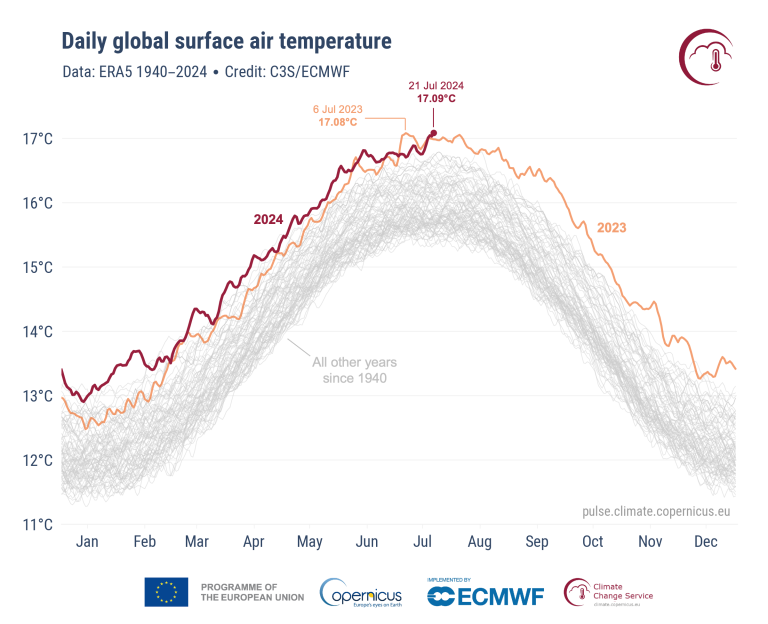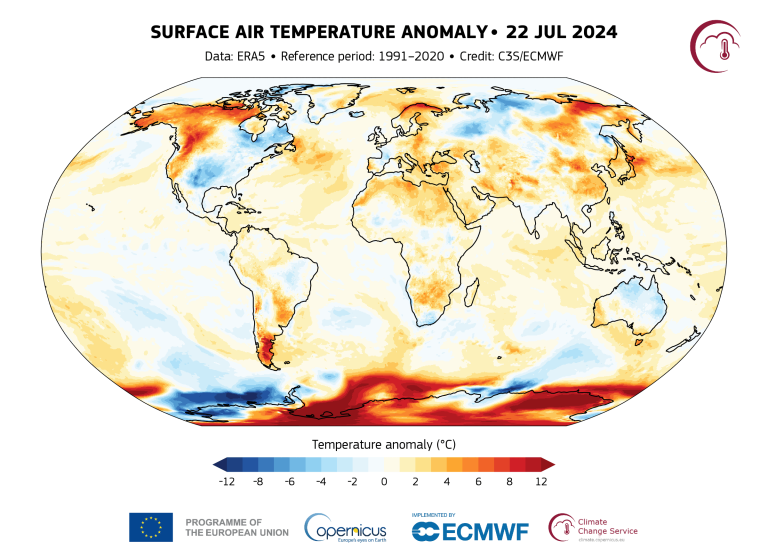The Earth has just experienced its warmest day in recent history, according to one of the datasets that the WMO uses to monitor the Earth's climate, namely the ERA5 dataset from the European Union's Copernicus Climate Change Service (C3S).
On 22 July 2024, the daily global average temperature reached a new record high in the ERA5 dataset, at 17.15°C. This exceeds the previous records of 17.09°C, set just one day before on 21 July 2024, and 17.08°C, set a year earlier on 6 July 2023.
"This new report of a daily global average temperature record is noteworthy because we are no longer in an El Niño warm phase and it has occurred during an extended period of extraordinary heat - June 2024 was the thirteenth month in a row of record-breaking global temperatures," said WMO Director of Climate Services, Chris Hewitt.
Prior to the long streak of record-breaking temperatures in July and August 2023, the highest daily global average temperature in the ERA5 dataset was 16.80°C, on 13 August 2016, following the strong El Niño event.
ERA5 is one of the datasets used by WMO to monitor global temperatures. It covers the period from 1940 to the present day. Some of the other global datasets date back to the start of the modern instrumental record in 1850.
According to C3S Director Carlo Buontempo: "On July 21st, C3S recorded a new record for the daily global mean temperature. What is truly staggering is how large the difference is between the temperature of the last 13 months and the previous temperature records. We are now in truly uncharted territory and as the climate keeps warming, we are bound to see new records being broken in future months and years."
Another sign of the global warming trend is the fact that the ten years with the highest daily average temperatures are the last ten years, from 2015 to 2024.

Likely causes
The global average temperature tends to be warmest during northern hemisphere summer. This is because the large land masses of the northern hemisphere warm up faster than the oceans of the southern hemisphere can cool down during the northern summer months. As a result, the annual peak of temperature generally occurs between late June and early August. This year, the global average temperature was already at near-record levels, after being at record levels for the time of year for more than a year.
The initial C3S analysis suggests that the rise in daily global average temperature is likely to be related to very warm temperatures over large parts of Antarctica and parts of the Southern Ocean which are experiencing low sea ice cover. Such large anomalies are not unusual during the Antarctic winter months, and also contributed to the record global temperatures in early July 2023.







